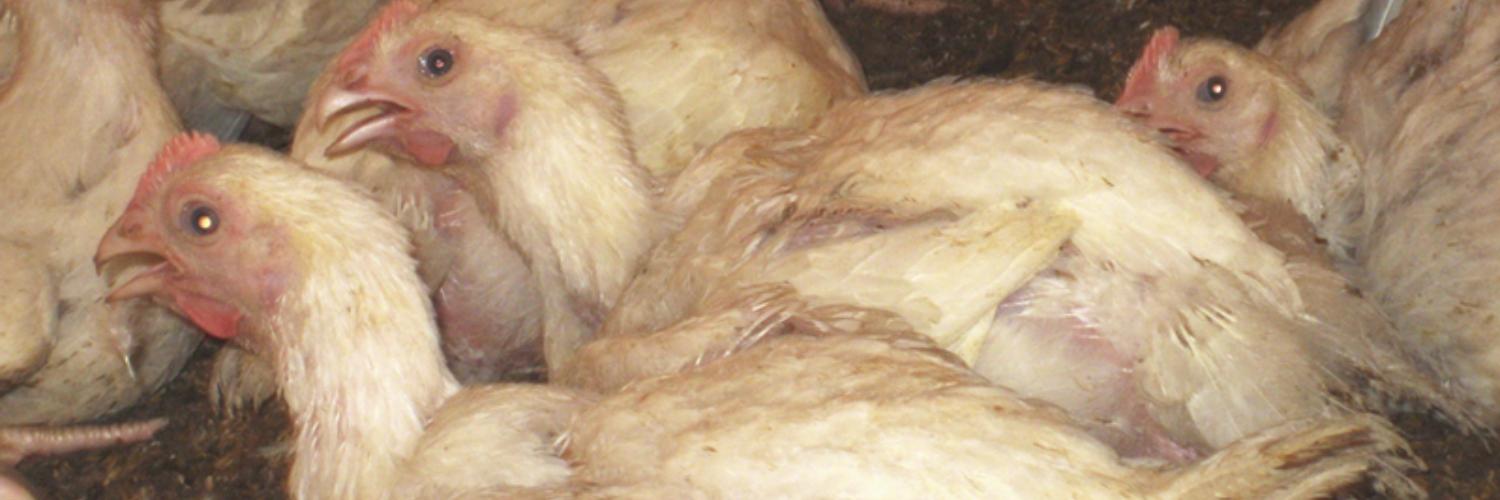Modern breeds of broilers are tied to the constantly increasing rates of growth and feed efficiency, which coincides with a decrease in resistance to high temperatures. High ambient temperatures adversely affect the productivity of poultry, its intestinal integrity, immune response and the quality of meat.
Feed additives that alleviate the effects of heat stress, for example, vegetable feed additives, usually have a specific antioxidant effect.
Birds are warm-blooded. Their thermoneutral zone is between 18 and 36 ° C, but the upper critical temperature is highly dependent on the air relative humidity (RH%), which decreases at a higher RH%, depending on the rock and on the production parameters. Also, the age of the parent herd and the conditions of incubation affect the resistance to high temperatures in the offspring.
As long as the ambient temperature is lower than the body temperature of the bird, heat loss can be increased by radiation, depending on the peripheral blood flow. The bird reacts to high ambient temperatures by a behavioral change, which allows it to restore the heat balance to the environment.
During periods of heat stress, broilers spend more time resting, are quieter or just sit next to a wall or a watering can. As a rule, they raise their wings in order to promote cooling by reducing the insulation of the body. Hyperventilation or "dyspnea" increases during periods of high ambient temperatures, which leads to increased losses of CO2.
Consequences of heat stress
Reducing feed intake is one of the first recognizable signs of heat stress in broilers. This reduced feed intake under heat stress is up to 30% of the reduced weight during heat stress. The main losses are associated with oxidative stress.
With chronic heat stress, cortisol in the plasma increases, and the level of thyroid hormones decreases. These elevated levels of cortisol in the plasma stimulate muscle catabolism and lipid peroxidation in muscle tissue, which was isolated from the increased content of malondialdehyde (MDA) in the pectoral muscle of broilers.
Studies have shown that peroxide oxidation of lipids in the pectoral muscle of broilers increases under the weight of thermal stress during the last two weeks before slaughter.
A new smartphone application has been developed to help farmers identify and assess the level of heat stress risk in pigs, poultry, dairy and meat farms.
In addition, it has been proved that the rectal temperature of broilers under heat stress increases by approximately 2 ° C in comparison with broilers placed at a thermoneutral temperature and broilers placed at a constant temperature of 34 ° C.
Further studies have shown that heat stress worsens the additional immune response and intestinal integrity. The latter effect was associated with the peroxidation of lipids in enterocytes.
In addition, it is indicated that heat shock proteins (HSP70, a group of highly conserved protective proteins involved in cell defense and cell repair) are crucial an important role in facilitating the response to heat stress since they stimulate the activity of antioxidant enzymes by releasing oxidative damage in intestinal mucosa Shell during overheating.
The side effects of thermal stress on intestinal integrity can cause increased translocation of Salmonella Enteritidis, resulting in inflammation of the intestine and an increase in the number of Salmonella in tissues after heat stress.
In addition, nutrient uptake has been reduced during heat stress, which supports the need to use high-digestible feed ingredients or feed additives that support the assimilation of nutrients.
Nutritional strategies for reducing heat stress
Although the effects of nutrient concentration on the heat load of broilers are limited, their concentration in the diet reduces energy consumption for nutrient intake, this is similar to feeding good quality granules. Obviously, by limiting protein access and optimizing the amino acid profile, metabolic energy costs will be minimized, in order to derive excess nitrogen.
The effect of heat stress with an optimal amino acid profile is not yet known.
The research showed that although an increased fat content due to carbohydrates will reduce metabolic heat, its effect is limited when it relies on normal feed ingredients. Obviously, management factors, such as feeding 4 to 6 hours before the hot period of the day, limit the thermal effects of feeding.
Nevertheless, broilers will only benefit from temporary feed costs if the ambient temperature at night is significantly lower than during the day (cyclic heat stress) in order to compensate for nutrient intake during cooler periods of the day.
Stressed birds discard up to 80% of the heat produced through evaporative cooling through dyspnea. Since heavy breathing increases the loss of CO2, heat-stressed birds will benefit from a higher cation-anion balance.
In addition to optimizing the composition of feed and structure, some (classes) of feed additives have been mentioned in the scientific literature to alleviate the (effects) of heat stress. The documents show that the effectiveness of such additives is focused on their antioxidant properties.
Thermal stress causes oxidative processes in enterocytes, as described in "the consequences of heat stress". Thus, increasing the level of food antioxidants, such as a combination of vitamins A and E, reduces lipid peroxidation under heat stress. Moreover, the addition of vitamin E improves the immune response to the heat stress of broilers.
Glutamine is considered to be an indispensable aminoacid and demonstrates an improvement in resistance to heat stress by broilers. The presence of glutamine in the diet increases the productivity and quality of meat broilers under heat stress, depending on the dose. In addition, glutamine enhances the expression of HSP70 in the jejunum after acute heat stress, protecting it from traumas of heat stress through elevated levels of antioxidant enzymes in lean tissue.
Finally, the increase in antioxidant status in broiler meat through a diet supplemented with rosemary or its essential oils improves meat quality and shelf life.
Feed additives of vegetable origin
Such additives (KDPP) are an effective tool for meeting the current and future challenges of producing livestock products. Many plants (eg, thyme, oregano) show antioxidant efficacy, which improves the nutrient supply of cells, strengthens cell defense against oxidative substances and minimizes damage caused by bacteria and oxidative stress, respectively.
Consequently, these mechanisms lead to an improvement in the state of animal health, which allows them to fully extract the maximum from their genetic potential.
Feed additives that improve resistance to heat stress, along with the vegetable feed additives, as a rule, have a specific antioxidant effect. Thus, antioxidant properties seem to have the most important influence to focus on the development of feed additives to improve resistance to heat stress.
Many aromatic plants, especially from the family of labial plants (for example, rosemary, thyme, oregano, and sage), have been extensively studied in terms of antioxidant activity. This activity is associated not only with phenolic compounds, since even without phenolic compounds they have significant antioxidant activity, stimulating the production of antioxidant enzymes even without phenolic compounds.
Thyme oil improves intestinal antioxidant status, lowers MDA content in enterocytes and improves intestinal integrity.
Feed additives of vegetable origin, containing essential oils, herbs, spices, and saponins, have a positive effect on the morphology of the intestines of broilers and significantly increase the digestibility of nutrients. In addition, they stimulate the production of antioxidant enzymes.
Because of their useful proven properties, especially in terms of increasing digestibility and antioxidant capacity, plant feed additives have the potential to become a new generation of feed additives for innovative nutrition and animal welfare. They can become an important tool when it comes to counteracting heat stress and, thus, will be able to contribute to the profitability of livestock products.
A source:biomedia.rf




